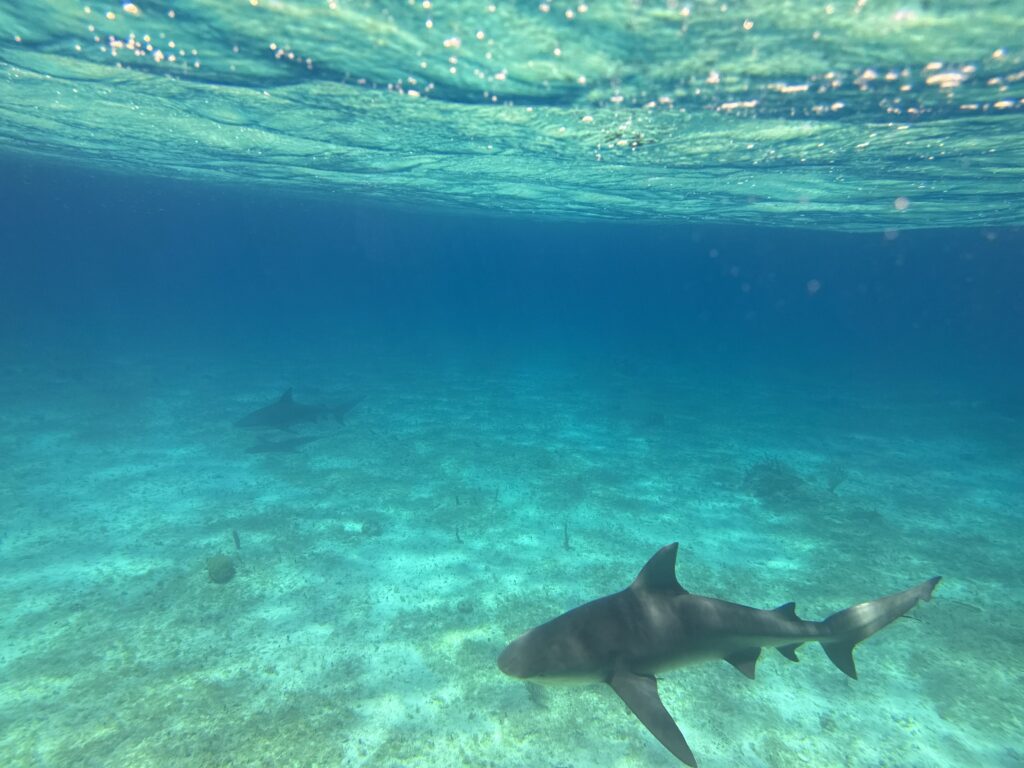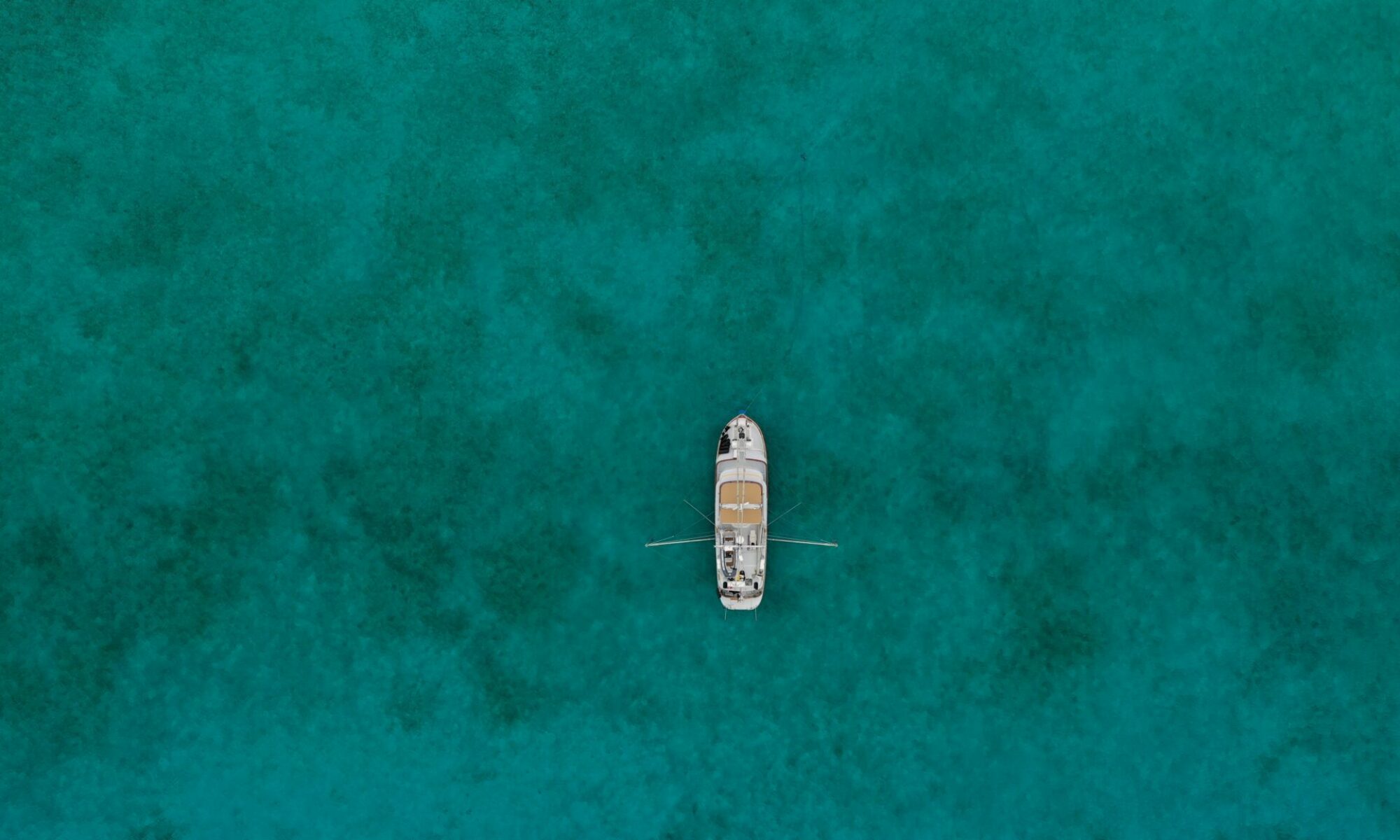It feels this way, here in the Jumento Cays. Like we’re on the edge of the world. Perhaps just by comparison to the Exumas, where we’ve spent most of our time. Near Staniel Cay there are mega yachts and swimming pigs and an occasional tour boat ripping past, dumping out screaming vacationers for their instagram moments. In Georgetown the string of mast lights could be a distant city skyline and we’ve often had to wait for traffic through the tunnel to reach Exuma Marketplace for provisions. We would revel at the occasional small, green turtle or nurse shark searching for scraps.

Out here at Flamingo Cay it’s hard to tell the difference between a cay or just a rock. The thin strip that make up the Jumentos runs North East from the Ragged Islands to Long Island. The West side is shallow, from 3 to 30 meters with corals scattered like an asteroid field. The east side drops immediately to hundreds of meters, then thousands. The deep waters and strong tides foster rich fishing grounds. We thought the sighting of a massive loggerhead turtle was a once-in-a-lifetime experience but after several others and some enormous green turtles, we realized it’s the nature of this place.



And then there are the sharks. Not the distinctive, flat, bottom dwelling nurse types, but larger, sleek reef sharks and maybe the occasional bull shark, though it’s hard to identify precisely when you’re doing all you can to remain still and calm and ignore the indelible reputation the media has imprinted on these predators. Fortunately it was tracking the school of fish that swam past and ignored me completely.
People rave about the bounty of the Bahamas. I heard a Florida local comment about how it reminds him how Florida ‘used to be’; so rich with fish, lobster and conch, ripe for the taking. The limits for lobster in the Bahamas is no more than 10 tails per person at a time. Several years ago on the White and Yellow banks of the Exumas we would find numerous rocks crawling with lobster. This year, after swimming many coral outcroppings on the same bank, we found a total of two lobsters – one was a female, not with eggs, but we still released it back, hopefully to bear more offspring.

In the Jumentos we did find many more, including a massive female with thousands of eggs (left to her business) and ledges teaming with spiny antenna. The water is deeper and the current stronger and the entire process of snaring these creatures much more challenging. But commercial fisherman have no doubt mastered this and a few small boats passed our purview, no doubt loading up to return the bounty to hungry tourists up north. The fishing grounds have pushed out this way, to the edge of this world. Hopefully the endeavor is more sustainable than the Flamingos which once lived here, but are reportedly ‘good eating’ and all but relinquished to reserves on other islands.
As we fished and explored, we checked the weather often, as we do. Twenty five knot winds from the northeast; definitely not ideal on this thin strip. Flamingo Cay affords some protection as it run northeast itself with a few spurs to the west. The other boats bugged out, some to the north, presumably to Georgetown and others south to Buena Vista Cay. We’d seen far worse conditions and besides, our 350 pound anchors and monstrous chain had held us when Hurricane Michael grazed us in the Chesapeake. So we enjoyed the solace and near perfect, windless days. Grouper, snapper, lobster and sunsets that made us feel like we were on another planet. Massive underwater structures built by the tiniest of creatures fostered daydreams of alien worlds.


A short chat with the last remaining sailboaters in our surveyed bay confirmed our plan. They agreed this spot should be quite comfortable for the coming blow, though they were headed south on their journey. We settled in and I explored a nearby cave and beach. As the winds picked up into the night it appeared predictions were merely that – a best guess, even with advanced weather models.
Around 9pm the anchor alarm signaled that something was off. We checked the distant cliffs with the spot light and they appeared much less distant. The winds were far more North apparent than predicted, which in turn pushed us towards the rocks rather than into deeper water. Luke made the call, we had to move.
Moving the boat in the Bahamas can be a challenge in the best conditions, with coral heads littering the depths like sea mines, giving them their nickname ‘bommies’. When the winds are sustained at 40 knots and gusting higher with wind and rain, the situation could go from bad to worse. A quick mental assessment suggested that staying where we were could be disastrous.
Luke’s background in flight makes him an excellent captain, especially when it matters most. When this tempest hit, there was no support or help for at least 50 miles either direction. “Take a breath”. We both paused and prepared. Luke took the flybridge helm and I prepared to haul up the anchor. He applied power in bursts and started to move us away from shore with each cresting wave. Hauling hard on the anchor, it seemed to come quick and I assumed we were moving up on its position, but instead of the satisfying ‘clunk’ of the anchor resting into the pocket, the end appeared up the hoss pipe, a clean shackle on its end. The anchor was gone.

I yelled up to Luke and immediately prepared to let loose the port anchor as he repositioned the boat, both of us desperately hoping for enough luck to avoid any of those bommies. Once he was happy with our position he signaled and I released the brake on anchor number two with plenty of scope. We surveyed the area as best we could and settled down for a restless night waiting for the winds to let up.



By mid morning I was able to swim the area and could see our anchor had dragged a bit then taken unexpected bite in the unforgiving, sandstone bottom. The chain was hooked around a rock, not ideal, but secure and had held us through the night. We settled for a day and the following I swam the bay looking for fluke tracks in the sand, to follow them back to our starboard anchor. Sure enough it was there, the shackle blown apart. I secured a buoy and we waited another day for wind.
A few boats streamed in from the south, no doubt having ridden the storm in the better protected Buena Vista Cay to the south. We moved closer to the anchor and prepared a rescue operation. For about two hours, several sharks circled the boat, but when I went to attach a heavy line to haul up our anchor, they had gone and only a massive, green sea turtle came by to inspect, swimming casually, not three feet from me.

We hooked a line to the anchor and used the aft winch to haul it and boat along side each other. Luke deployed the davit and minutes later the anchor was on the upper deck, secured for the trip home.
We’re thankful to have alarms and spotlights and dual anchors. It’s hard to imagine how sailors from years ago survived, but I’m reminded many did not, as I notice the wreckage of a sailboat just on shore near where our anchor rested several days. Our Starlink satellite connection continued to remain connected through the ordeal. Imagine, we could have live streamed. Every experience is a lesson learned.



